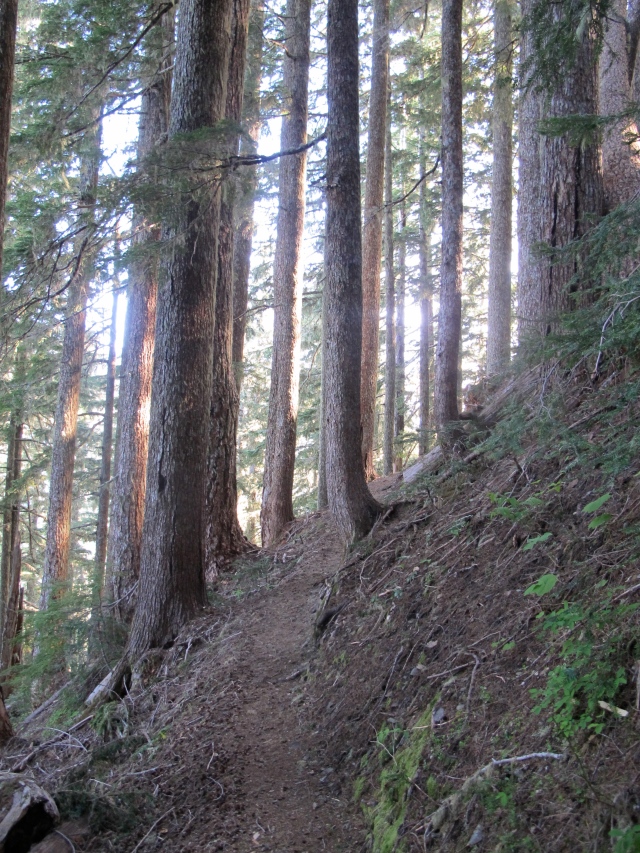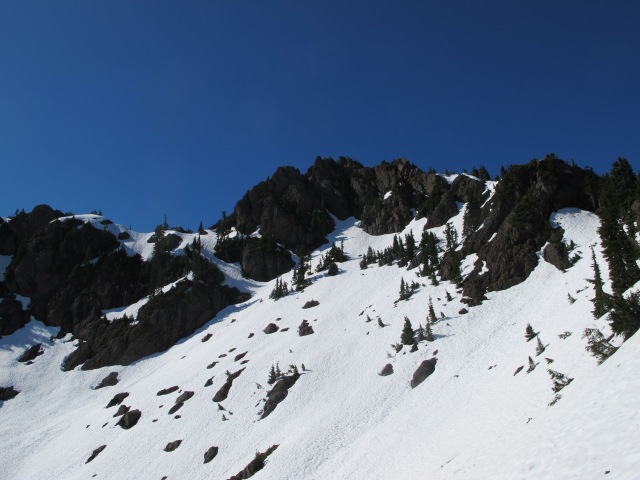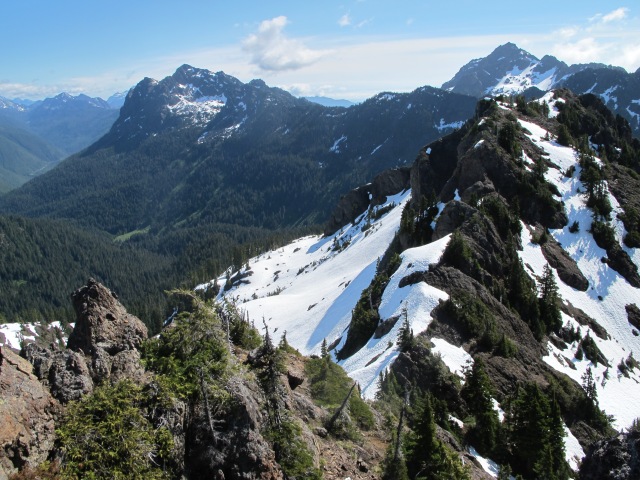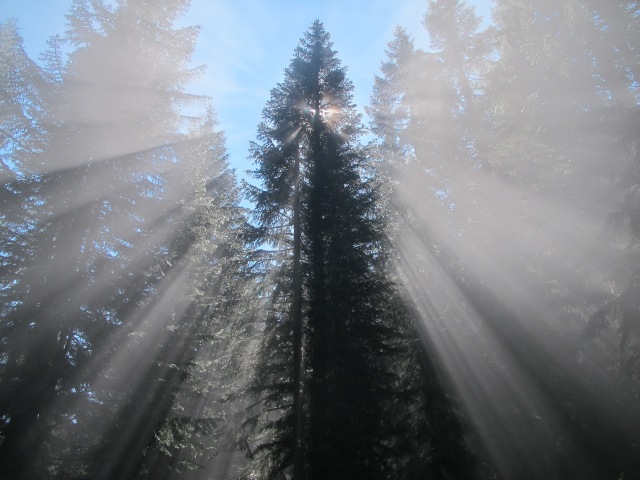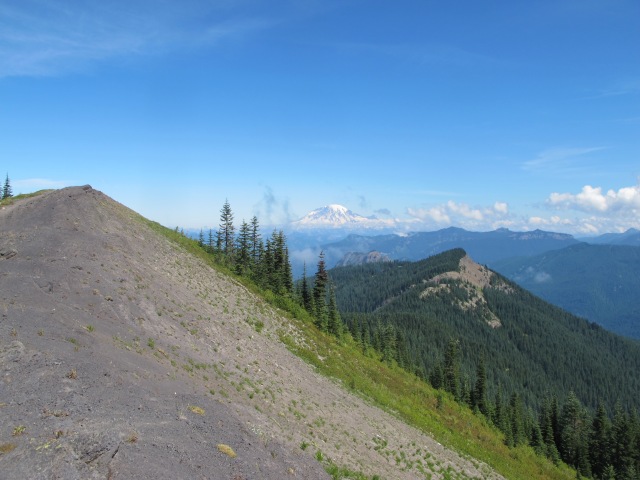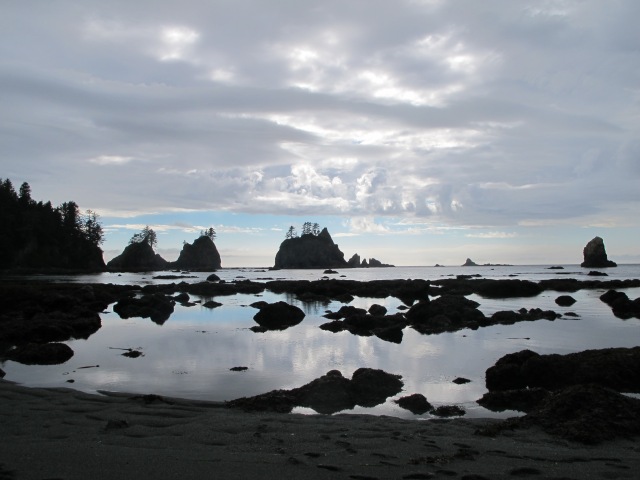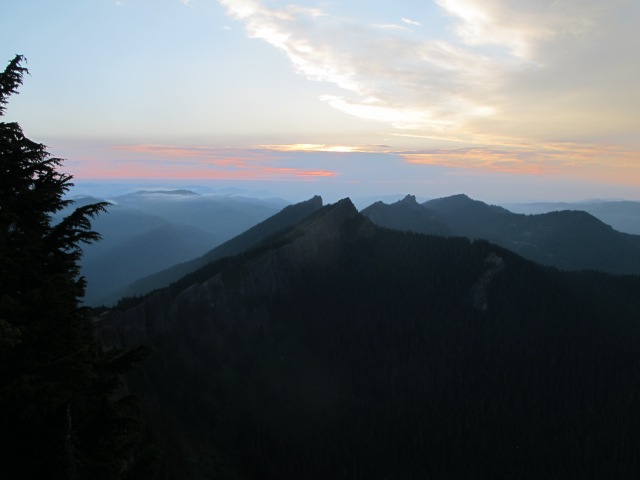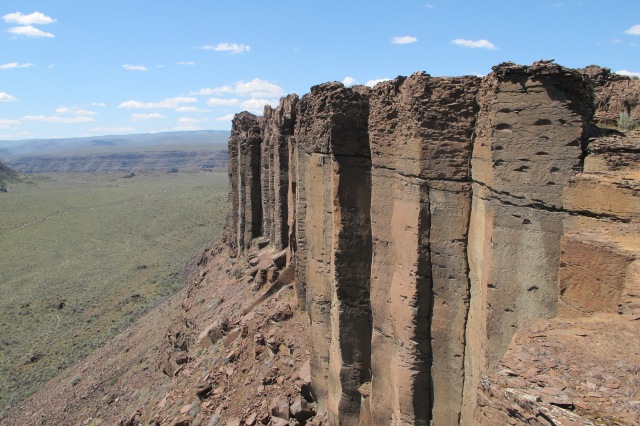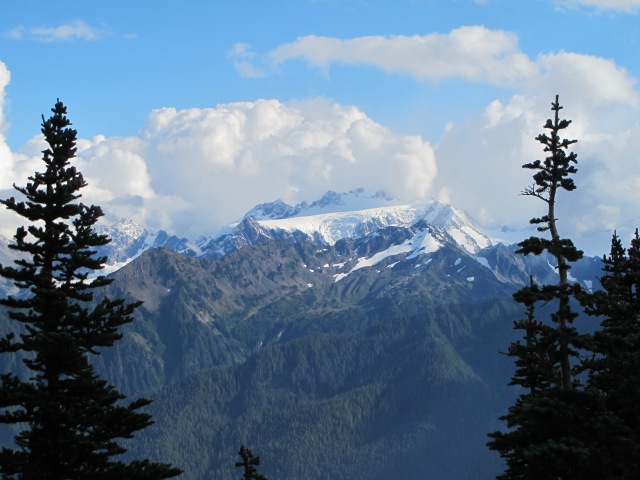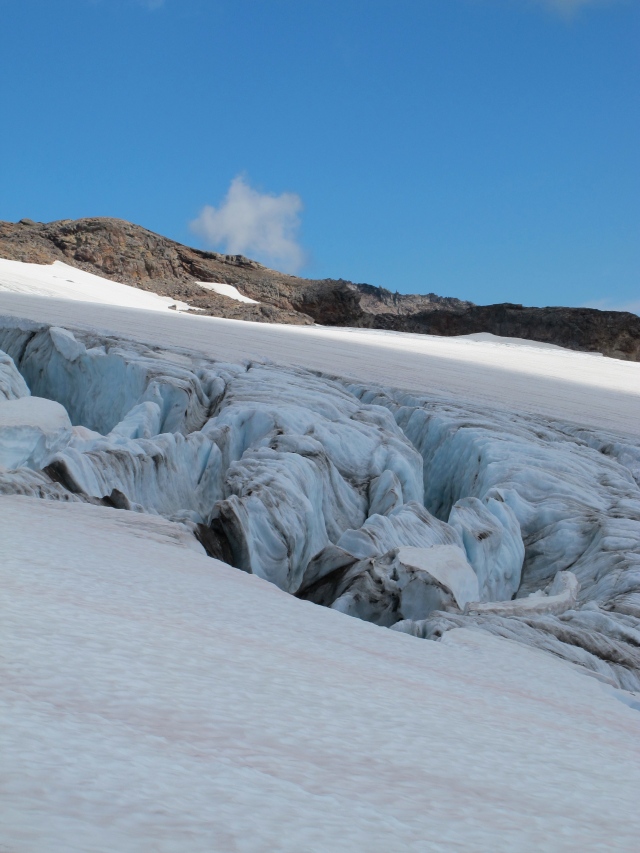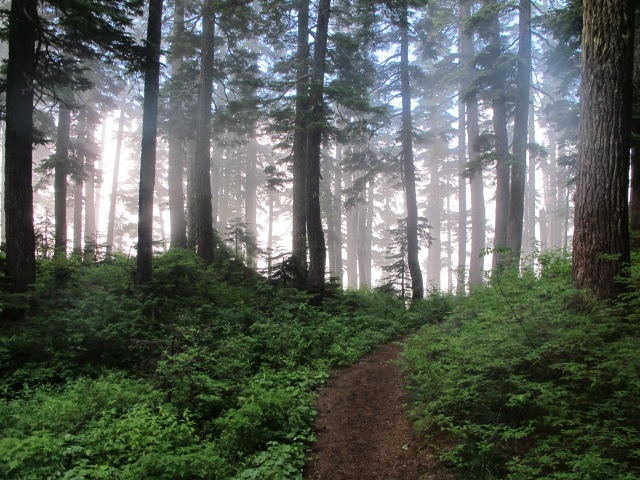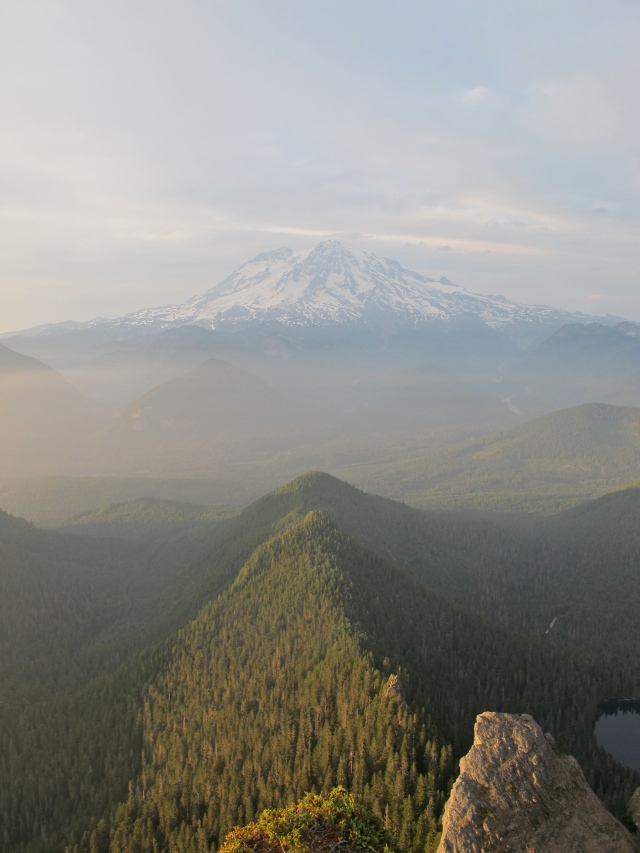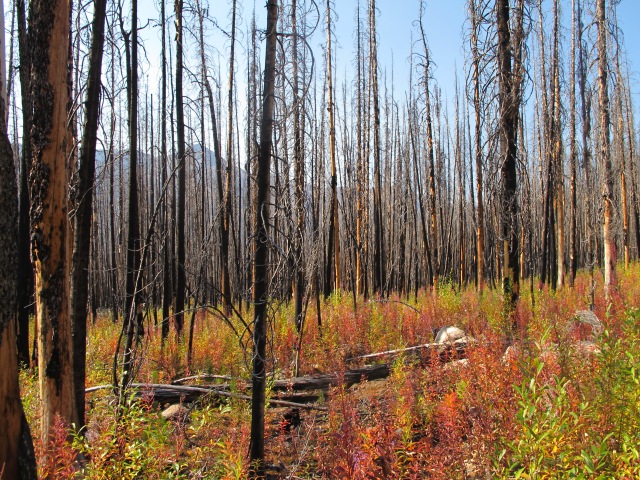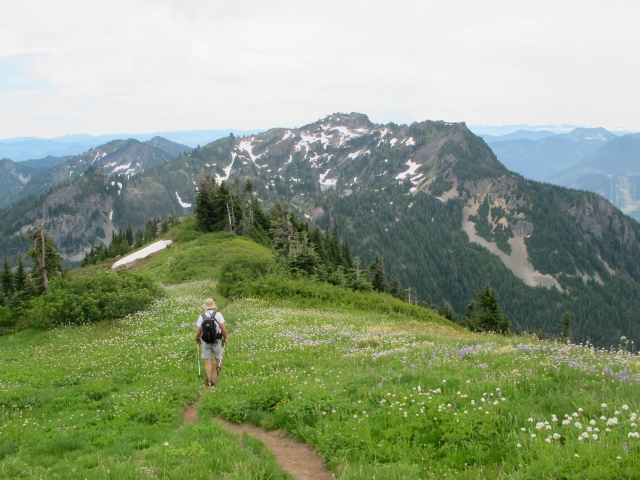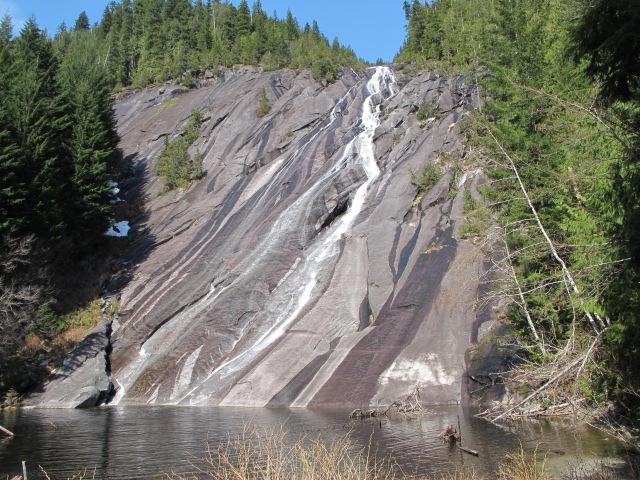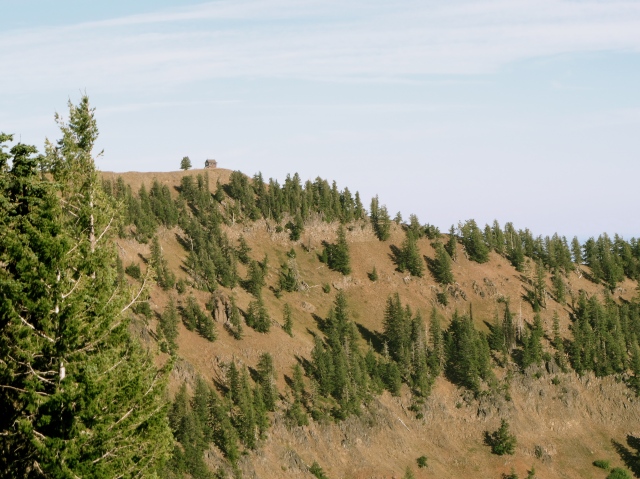
“So you wrote a hiking guidebook, what’s next?” I asked myself. “Go to work at a publishing house in Manhattan? Guide the wealthy on outdoor excursions?”
Instead, I was accepted for a coveted artist-in-residence program at the Summit at Snoqualmie ski resort.* I could work on my writing as much as I wanted outside the hours that I worked as a lift operator and skied.
On my first Saturday of lift operations, I walked through the cafeteria, up a carpeted staircase and into Lift Operations headquarters for the inaugural safety meeting. Twenty other people filled the room – high schoolers, college students, recent graduates, people between careers, and burnouts. Unsure where I fit in, I stood against the wall.
Our captain wore a stained brown cap with an American flag on the front that was visible only when the fluorescent lights caught it just right. After the safety meeting, which consisted of our captain spitting gobs of tobacco into a plastic bottle while urging us to be professional, he sent us out onto the hill.
At Easy Street, a two-person chair going up the bunny slope, I soon learned that I wouldn’t be able to simply sit in the lift shack listening to Black Sabbath and writing poetry in exchange for my wages. Operating a bunny slope chair is serious!
The chair swings through the loading area every seven seconds. In that time, one must lift a pair of children onto a chair, make sure they’re seated properly, and keep one eye on them while trying to coax the next pair of children into the loading zone. If anything goes wrong, children can get hit by the steel chair. The guy training me made it look easy. He was closing in on a decade of lift operating and his technique was thoroughly refined. I admired his calm ease with guests and his ability to tell jokes that meant one thing to kids and something slightly lewder to their parents.
Most of the children who ride Easy Street are five to eight years old. My first day of work coincided with their first day of lessons, and many of them had never ridden a chairlift before. I lifted the shortest ones onto the padded seats. I asked the slightly taller children if they wanted help getting onto the chair. They often returned this query with an open mouth and a blank stare, or perhaps an unintelligible mumble, squeak, or other vocalization. I adopted the mantra “um means yes.”
Later in the day, I made my way to the top of the chair for an afternoon of helping the kids who forgot to unload in the appropriate spot – bullwheel riders, in industry parlance. Again and again, I stopped the chair as kids rode past the unload here signs and into the air. With their skis dangling three feet off the ground, they would often inform me that they forgot to get off.
After unloading and thanking the young bullwheel riders for riding my chair – as per Boyne Resorts policy – I returned to the lift shack and dutifully recorded the time, reason for stopping the chair, and the length of the stop on the lift log. Every stop must be recorded. The completed logs get hole-punched and put into binders in the break room where they remain in perpetuity, unless they are summoned to court.

A talented coworker crafted this piece
I soon mastered the basics of stopping, starting and slowing down the chair. Next I concentrated on perfecting my ramp. I may have never mastered the arts of erecting the mazing at the bottom of the lift, greeting guests by name, or answering the phone within three rings. But I did become a ramp artiste. I quickly learned to fill in holes, scrape away mounds, and generally eradicate irregularities. Maintaining a ramp takes constant vigilance.
The days went on. Night’s after work, visions of miniature skiers shuffling forward into the loading zone percolated my dreaming mind. My feet stayed moist for months and my jokes got better.
The steady stream of skiers and snowboarders blurred together. I had the same interactions over and over, just with different people.
“Can you slow it down just a tiny bit. Like to 90 percent?” a timid skier would ask.
“Sure,” I responded with my finger hovering over – but not pressing – the slow button, which cuts the chairlift speed in half.
“Can you help me out with a boost?” The mother of a two-foot tall boy would ask.
“Of course. Is he going to need one too?” I’d respond.
And every once in a while a skier or snowboarder – usually an instructor – would tip me with a piece of candy, or a foul-smelling but appreciated energy drink.
Finding a balance between dehydration and an extreme need to pee is one aspect of chairlift operations that I never mastered. I began lunch breaks and ended my shifts by hustling to the long line of urinals in the lodge in a race against my bladder. After taking care of this most urgent need, I then turned my attention to my pulsing headache and dry lips by chugging water. But not too much, or I’d never make it through the afternoon.
At times, I resorted to scavenging the garbage can at the top shack for a bottle to pee in. I could only pull this off on quiet weekdays, and only after carefully weighing the chances of getting caught versus the possibility that I could hold it long enough to summon a relief lift operator, wait for them to arrive atop the chair, ride the chair to the bottom, and run to the long line of urinals.
My time as artist-in-residence was grueling. But it was made worthwhile by the hours I spent night skiing after work. I carved turns under the lights and rode lifts for free thanks to my complimentary season pass.
Will I further my career in Lift Operations and put in the four or five years required to become a Lift Supervisor? Well, I suspect I won’t have the chance to do so. At least not at the Summit at Snoqualmie.
After artfully scheduling an overnight ski tour to Vesper Peak (detailed in a previous post) around my work schedule, I got a call from my boss. It was Thursday and he wanted to tell me that rather than working the following Saturday, Sunday, Monday, and Tuesday, as scheduled, I would be working just Wednesday and Thursday. I politely told him that I would not be working those days, for I already had plans to ski Vesper Peak. My friend Brett had even taken time off work to accommodate my work schedule.
My boss, correctly inferring that I had not grasped a basic tenet of employment, informed me that “You usually look at your work schedule and plan your activities around that. That’s typically how it works.”
I thanked him for the lesson and told him I still wouldn’t be able to work Wednesday or Thursday. He responded by telling me that he might not need me for the remaining weekends in April. After hanging up the phone, he voided my season pass, ending my tenure as a lift operator.
The timing couldn’t have been better. Night skiing at the Summit was closed for the season.

Hundreds of mini skiers turning in formation down the slopes of East Street for the Powder Pigs year-end celebration
*The artist-in-residency bit is a fabrication. My tenure at the Summit at Snoqualmie did not include an actual place of residence. Or an artist-in-residence program.


